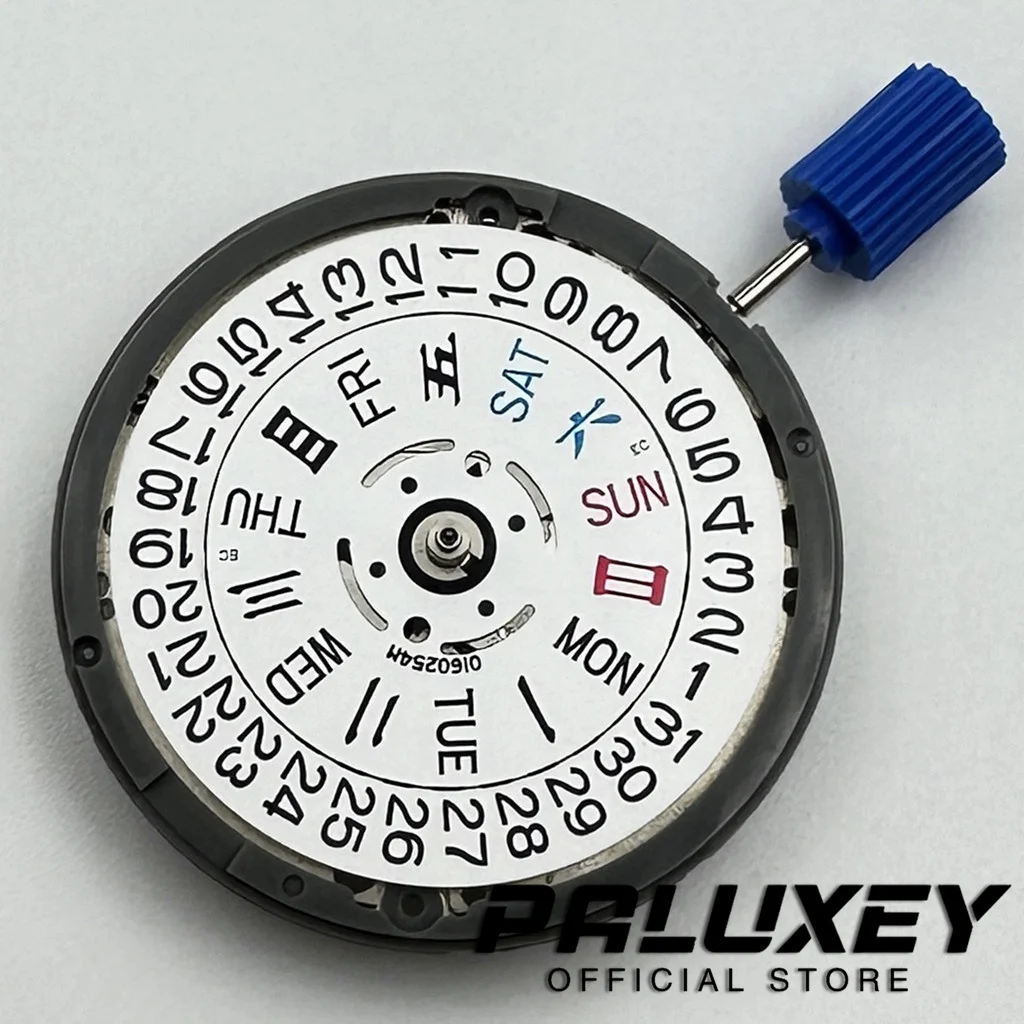1. Introduction: Decoding Your Watch’s Calendar
Calendar complications represent some of the most practical and visually appealing features in luxury timepieces. These specialized mechanisms display date information in various formats, with the day-date and triple calendar functions standing as two prominent variations that often confuse watch enthusiasts and newcomers alike.
The mechanical ingenuity behind these calendar displays reflects centuries of watchmaking evolution, showing how timekeeping has expanded beyond simply showing hours and minutes. The classic Rolex Day-Date and the elegant Jaeger-LeCoultre Master Calendar represent iconic examples of these distinct approaches to date displays on a wristwatch.
Interest in traditional mechanical calendar watches continues to grow despite our digital age, as they combine everyday practicality with horological craftsmanship. Understanding these complications helps appreciate the artistry behind them and makes choosing between them easier.
This comprehensive guide explores the differences, advantages, and considerations between day-date and triple calendar functions to help you determine which best suits your needs and preferences. The historical context of watch complications provides valuable perspective on how these features evolved to their current form.
2. What Are Watch Complications?
In horology, a “complication” refers to any function beyond simple timekeeping—anything more than the standard hours, minutes, and seconds. While this term might sound negative in everyday language, in watchmaking, complications represent achievements that demonstrate a watchmaker’s skill and ingenuity.
Complications emerged as watchmakers sought to create timepieces that offered more information and utility. From simple date displays to intricate celestial charts, these features evolved through centuries of innovation and refinement.
Calendar functions occupy a special place in the hierarchy of watch complications:
– Simple date displays (most basic)
– Day-date functions (showing weekday and date)
– Triple calendars (showing weekday, date, and month)
– Annual calendars (requiring adjustment only in February)
– Perpetual calendars (accounting for leap years automatically)
This progression reflects increasing mechanical complexity and sophistication. The journey of calendar complications from pocket watches to wristwatches mirrors broader evolution in watch technology that combines practicality with mechanical artistry.
3. The Day-Date Complication Explained
A day-date complication displays two key pieces of information: the current day of the week and the date of the month. This combination provides the wearer with essential calendar information at a glance, making it one of the most practical complications in watchmaking.
How It Works
The mechanism behind a day-date watch involves synchronized rotation of two separate discs—one for the day and one for the date. These discs advance automatically at midnight through a complex series of gears, springs, and levers connected to the main timekeeping mechanism. The mechanics behind day-date functions demonstrate remarkable engineering within a confined space.
Display Configuration
Most day-date watches display this information through apertures (windows) on the dial. Common arrangements include:
– Day window at 12 o’clock with date at 3 o’clock
– Both day and date displayed side-by-side at 3 o’clock
– Day and date windows flanking the dial at 9 and 3 o’clock
Adjustment Requirements
Day-date watches typically require manual adjustment for months with fewer than 31 days. The mechanism doesn’t distinguish between 30-day and 31-day months, meaning the wearer must advance the date manually at the end of February, April, June, September, and November.
Unique Appeal
The day-date offers several advantages:
– Clean, balanced dial aesthetics with limited information
– Practical everyday functionality
– Less mechanical complexity than more advanced calendars
– Greater affordability compared to triple calendars
– Easier adjustment process
4. Design Variations in Day-Date Displays
Watch manufacturers have developed numerous ways to integrate day-date displays into their timepieces, each with distinct aesthetic considerations.
The most traditional layout features the day at the 12 o’clock position and the date at 3 o’clock. This arrangement creates visual balance while keeping information easily readable. Other common variations include:
- Double windows at 3 o’clock position, with day above date
- Day and date at 6 o’clock, often in a single larger aperture
- Day at 9 o’clock with date at 3 o’clock for symmetry
- Pointer-style date with day window
Many luxury watches offer bilingual day discs that alternate between languages (commonly English/French, English/Spanish, or English/German). These discs rotate to show the preferred language during the day change.
The placement of these windows significantly impacts the overall dial balance and readability. German watchmakers often favor symmetrical layouts, while Swiss designs frequently position both indicators on the right side of the dial. Japanese watches like those from Seiko often feature creative day-date configurations that prioritize legibility.
Our day-date automatic watches collection showcases various approaches to these design considerations, highlighting how different brands solve this design challenge.
5. The Triple Calendar Complication Explained
A triple calendar complication expands upon the day-date by adding a third crucial piece of information: the month. This comprehensive calendar display provides a complete picture of the date, showing the day of the week, date of the month, and current month all at once.
Components and Display
Triple calendar watches typically feature:
– A day of the week display (usually in a window)
– A date indicator (often via a pointer hand or window)
– A month display (typically in a window)
The most common configuration places the day and month in windows near the top of the dial, with a date indicator either circling the perimeter or displayed in a separate window.
Mechanical Complexity
The addition of a month display significantly increases the watch’s mechanical complexity. While a day-date mechanism uses two discs, a triple calendar requires an additional month disc and the corresponding mechanism to advance it precisely once each month.
The month indicator advances through a complex system that counts the passing days, triggering the month change after the appropriate number of days has elapsed. This requires more components and more precise engineering than a standard day-date.
Adjustment Requirements
Like day-date watches, triple calendars require manual adjustment for months with fewer than 31 days. The wearer must advance both the date and month displays at the end of February, April, June, September, and November.
Value Proposition
Triple calendar watches offer:
– More comprehensive date information
– Enhanced prestige due to greater mechanical complexity
– Traditional horological appeal with roots in classic watchmaking
– More intricate dial designs with greater information density
The enduring importance of calendar displays in modern watches speaks to their combination of practicality and craftsmanship.
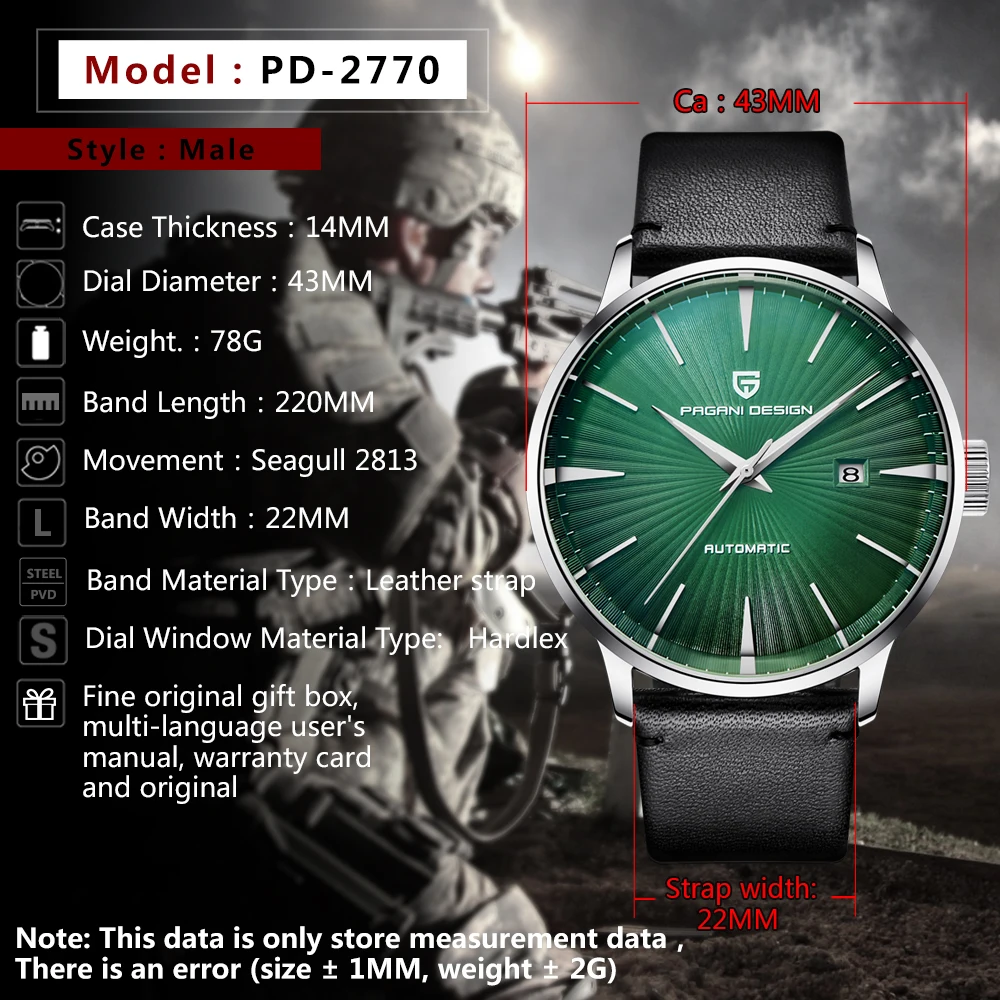
6. Design Variations in Triple Calendar Displays
Triple calendar watches present watchmakers with a significant design challenge: displaying three distinct pieces of information while maintaining dial harmony and readability.
Common Layouts
Several arrangements have become standard in triple calendar designs:
– Day and month windows at 12 o’clock (often side by side) with a pointer date hand
– Day window at 12 o’clock, month at 6 o’clock, and date around the perimeter
– Day, date, and month windows clustered at 3 o’clock
– Day at 9 o’clock, month at 3 o’clock, date in a subdial or along the perimeter
Design Styles
Triple calendar watches typically follow two main design philosophies:
– Classic designs with pointer date hands and subtle window displays
– Modern interpretations with bold apertures and high-contrast date displays
Many manufacturers pair triple calendar displays with moonphase indicators, creating an even more comprehensive astronomical watch. This combination has deep historical roots in watchmaking tradition, as seen in many moonphase automatic watches.
The challenge with triple calendar designs lies in presenting substantial information without overwhelming the dial. Master watchmakers accomplish this through careful proportion, thoughtful color contrast, and strategic placement of indicators.
7. Head-to-Head Comparison: Day-Date vs. Triple Calendar
To understand the differences between these two calendar complications clearly, let’s compare them across several key dimensions:
| Feature | Day-Date | Triple Calendar |
|---|---|---|
| Information Displayed | Day of week, Date of month | Day of week, Date of month, Current month |
| Mechanical Complexity | Moderate (two display discs) | High (three display mechanisms) |
| Adjustment Frequency | 5 times yearly (for months <31 days) | 5 times yearly (for months <31 days) |
| Dial Aesthetics | Cleaner, less crowded | More information-rich, traditional |
| Typical Price Range | $800-$5,000+ | $1,500-$10,000+ |
| Dial Legibility | High (fewer elements) | Moderate (more information density) |
| Heritage | Modern practicality | Traditional horology |
The fundamental trade-off between these complications is simplicity versus comprehensiveness. Day-date watches offer essential information with cleaner aesthetics and lower price points, while triple calendars provide complete date information with greater prestige and mechanical complexity.
Triple calendars typically command a significant price premium due to their additional components and engineering requirements. However, they also offer greater horological prestige and visual complexity that many enthusiasts value.
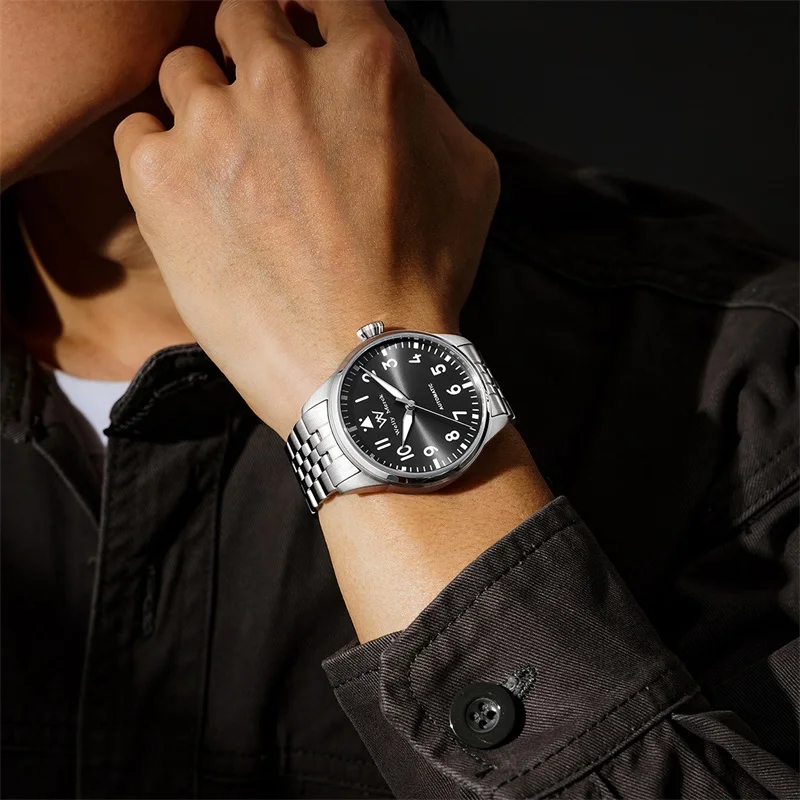
8. Practical Considerations for Daily Wear
Beyond aesthetics and mechanical appreciation, practical considerations should guide your choice between these calendar complications.
Maintenance and Adjustments
Both watch types require adjustment five times yearly (at the end of 30-day months and February). However, triple calendar watches involve adjusting more components, potentially making the process slightly more time-consuming.
For those who don’t wear their automatic watches daily, either complication will require resetting after the watch has stopped. Triple calendar resetting takes longer due to the additional month function.
Legibility Considerations
Day-date watches typically offer better at-a-glance readability due to their simpler displays. Triple calendars, while more information-rich, can sometimes require closer inspection to read all displayed information, especially on watches with smaller dials.
Lifestyle Fit
Consider how each complication aligns with your lifestyle:
– Business professionals may prefer day-date watches for their clean appearance and quick reference during the workweek
– Collectors and horology enthusiasts might gravitate toward triple calendars for their mechanical sophistication
– Those who travel frequently may find a day-date sufficient alongside their digital devices
For those seeking even fewer adjustments, perpetual calendar automatic watches represent the ultimate evolution of this technology, albeit at much higher price points.
9. Beyond Basic Calendars: Annual and Perpetual Calendars
Calendar complications extend beyond day-date and triple calendar functions into more sophisticated territory with annual and perpetual calendars.
Annual Calendars
Annual calendar watches automatically adjust for months with 30 and 31 days, requiring manual adjustment only once yearly at the end of February. This mechanism “knows” which months have 30 days versus 31 days, significantly reducing maintenance compared to standard calendar watches.
Annual calendars emerged in the 1990s as a more affordable alternative to perpetual calendars while still offering enhanced convenience.
Perpetual Calendars
The pinnacle of calendar complications, perpetual calendar watches automatically adjust for all month lengths and even leap years. A properly running perpetual calendar theoretically needs no manual date adjustment until the year 2100 (when an exception in the leap year rule occurs).
This remarkable feat of mechanical engineering comes with significantly higher complexity and cost. Perpetual calendar watches typically start at several thousand dollars and can reach six figures for prestigious brands.
Both annual and perpetual calendars represent substantial price jumps from day-date and triple calendar watches. However, they offer the ultimate convenience for those who value minimal adjustment requirements and maximum horological sophistication.
The relationship between various calendar functions and astronomical displays creates fascinating combinations, as seen in many lunar calendar and moonphase watches.
10. Choosing Between Day-Date and Triple Calendar Watches
Selecting between these two complications ultimately comes down to personal preferences across several factors:
Information Needs
Ask yourself: Do you need to know the month regularly? For most people, the day and date provide sufficient information for daily life, as we typically remain aware of the current month. However, those who value complete calendar information at a glance might prefer a triple calendar.
Aesthetic Preferences
Consider your dial preference:
– Clean, uncluttered appearance (favor day-date)
– Traditional, information-rich display (favor triple calendar)
– Minimalist design philosophy (favor day-date)
– Classical watchmaking aesthetics (favor triple calendar)
Budget Considerations
Triple calendar watches generally command a 30-80% price premium over comparable day-date models due to their additional complexity. Determine whether this additional investment aligns with your budget and the value you place on the extra functionality.
Collector Perspective
For watch collectors, triple calendars often hold greater appeal due to their:
– Stronger connection to watchmaking heritage
– Greater mechanical complexity
– Relative rarity compared to day-date models
– Higher positioning in the horological hierarchy
Understanding how long automatic watches last can also inform your decision, as these investments can span generations with proper care.
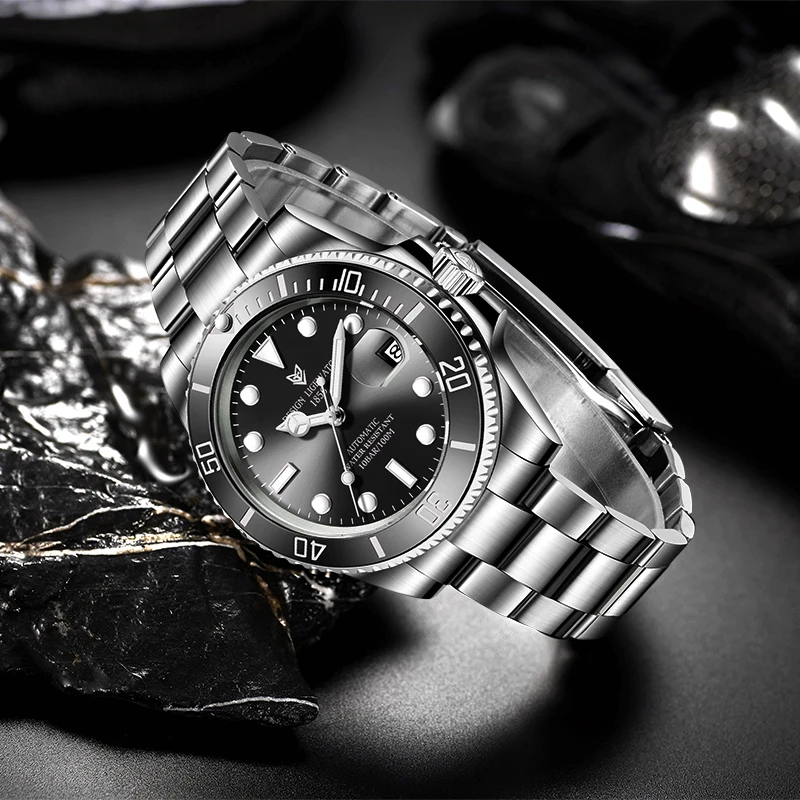
Classic Automatic Dress Watches, Day Date Automatic Watches, Perpetual Calendar Automatic Watches
Price range: $540.60 through $574.60 Select options This product has multiple variants. The options may be chosen on the product pageAutomatic Chronograph Watches, Chronograph Pilot Watches
Price range: $233.36 through $237.58 Select options This product has multiple variants. The options may be chosen on the product pageClassic Automatic Dress Watches, GMT Automatic Watches, GMT Pilot Watches
Price range: $1,240.86 through $1,463.33 Select options This product has multiple variants. The options may be chosen on the product pageAutomatic Chronograph Watches, Classic Style Dive Watches
$3,053.06 Select options This product has multiple variants. The options may be chosen on the product pageAutomatic Skeleton Watches, Open Heart Automatic Watches
$98.36 Select options This product has multiple variants. The options may be chosen on the product pageBronze Automatic Watches, Military Inspired Automatic Watches, Professional Spec Dive Watches
Price range: $1,442.21 through $1,442.82 Select options This product has multiple variants. The options may be chosen on the product page
11. Are Triple Calendar Watches Worth the Premium?
The price difference between day-date and triple calendar watches raises a legitimate question: Does the additional month display justify the higher price?
From a purely practical perspective, the answer might be no. Most people remain aware of the current month without needing a watch to display it. However, the value of a triple calendar extends beyond mere practicality.
Triple calendars represent a deeper connection to traditional watchmaking heritage. Their additional complexity demonstrates a higher level of horological achievement, which many enthusiasts value beyond practical considerations.
From a collector’s perspective, triple calendar watches often hold stronger investment potential. Their greater complexity, stronger connection to watchmaking tradition, and relative scarcity compared to day-date models can support better value retention.
For many watch enthusiasts, the decision ultimately transcends practical considerations—it becomes about appreciating mechanical artistry and owning a more sophisticated example of the watchmaker’s craft. Our diverse collection of automatic watches includes options across the spectrum of complications.
12. How Calendar Watches Revolutionized Timekeeping
Calendar complications represent one of horology’s most significant functional evolutions. Before their development, timepieces only displayed the time—not the date.
The first calendar pocket watches emerged in the late 18th century, displaying simple date information through small apertures or subsidiary dials. As watchmaking techniques advanced, more sophisticated calendar mechanisms developed, eventually leading to complete calendar pocket watches showing day, date, and month.
The transition from pocket watches to wristwatches in the early 20th century presented new challenges for calendar mechanisms. The significantly smaller space required ingenious miniaturization of calendar components—a feat that took watchmakers decades to perfect.
By mid-century, day-date wristwatches had become practical everyday tools, while triple calendars remained more specialized items for enthusiasts. The continuing timeline of watch innovations shows how these complications have evolved alongside other horological advancements.
13. Common Misconceptions About Calendar Watches
Several misconceptions surround calendar watches that can confuse potential buyers:
Myth: Triple calendars are always more accurate than day-dates
Fact: Both complications require the same manual adjustments for months with fewer than 31 days. Neither automatically knows which months have 30 versus 31 days.
Myth: All calendar watches adjust automatically
Fact: Only annual and perpetual calendars offer automatic adjustment features. Standard day-date and triple calendar watches require manual adjustments five times yearly.
Myth: Day-date functions are always basic
Fact: While simpler than triple calendars, many day-date mechanisms feature sophisticated engineering, including instantaneous date changes at midnight and quick-set adjustment features.
Myth: Triple calendar equals annual calendar
Fact: Triple calendars display more information (day, date, month) but still require adjustment for months with fewer than 31 days. Annual calendars automatically adjust for different month lengths except February.
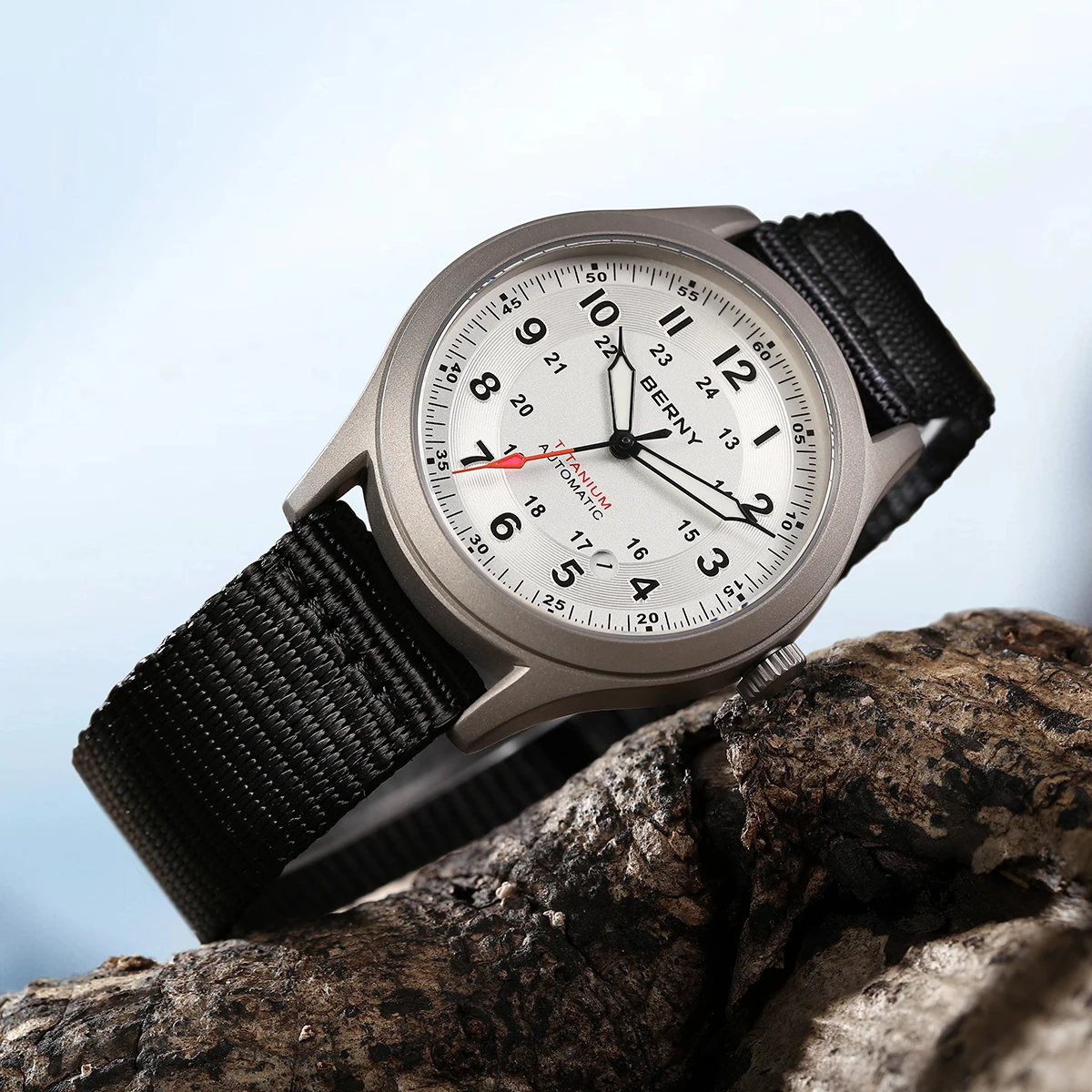
14. Final Thoughts: Appreciating Calendar Craftsmanship
Whether you choose a day-date or triple calendar watch, both represent significant achievements in mechanical engineering. These complications transform simple timekeeping instruments into more comprehensive tools that connect us to the passage of time in meaningful ways.
Day-date watches excel in providing essential information with clean aesthetics and relative affordability. Triple calendars offer a more complete calendar picture with greater horological prestige and mechanical sophistication.
The beauty of mechanical watch collecting lies in appreciating these differences and choosing the complication that resonates with your personal preferences. Some collectors even choose to own both types to enjoy their distinct characteristics in different situations.
What matters most is selecting a watch that brings you joy—whether through its practical functionality, mechanical ingenuity, aesthetic beauty, or all three combined. The ultimate guide to complex watch complications can help you explore even more horological innovations.
15. Can a Calendar Watch Justify Its Cost?
In an age where digital devices display the date with perfect accuracy, mechanical calendar watches might seem unnecessary. Yet their enduring popularity speaks to something deeper than mere functionality.
Mechanical calendar watches represent a fascinating intersection of art, engineering, and tradition. The tiny springs, gears, and levers that drive these displays embody centuries of human ingenuity. This craftsmanship aspect alone justifies their value for many enthusiasts.
Beyond their technical merits, fine watches serve as functional jewelry—personal expressions that reflect individual style and appreciation for craftsmanship. A quality calendar watch can become a signature accessory that accompanies life’s important moments.
For most enthusiasts, the decision to invest in a mechanical calendar watch transcends logical considerations. It’s about connecting with horology’s rich heritage, appreciating mechanical artistry, and owning something with soul and character that stands apart from our disposable digital world.

